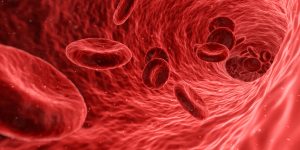Blood stem cells are the fundamental component of regenerative medicine applications involving the blood and immune system. Despite significant efforts and investment, the research community has largely failed to maintain fully functional blood stem cells for substantial periods of time outside the body. As a result, the limiting factor for cell and gene therapies is often obtaining a sufficient number of blood stem cells to seed the production of mature cells (e.g., red blood cells, platelets) or to durably engraft during bone marrow transplantation (as in the case of gene therapy).
Two main avenues of research have been pursued to try and achieve this decades-old goal:
- isolating adult blood stem cells and coaxing them to undergo self-replication outside the body; or,
- using more immature stem cells (i.e., embryonic or induced pluripotent stem cells) to produce blood stem cells as they would do during a normal developmental process.
With such a huge amount of research focused in these two areas, there have been notable developments and these are summarized well in the following articles that review the scientific literature here and here. What I would like to spend time on is a game-changing advance in stem cell expansion efforts and a thought-provoking approach in primitive cell differentiation strategies.
First is the publication last year of a novel blood stem cell expansion system using mouse blood stem cells as a starting cell product that has put researchers on the cusp of breaking through the functional blood stem cell expansion barrier.
While numerous groups have attempted to expand blood stem cells and their progeny, only modest expansion (e.g., 2-4 fold) of functional blood stem cells had been reported in defined serum-free conditions. Last year, Satoshi Yamazaki (University of Tokyo) and Hiromitsu Nakauchi’s (Stanford University) labs published a novel blood stem cell expansion system that demonstrated an incredible potential for expanding functional blood stem cells (~200-fold) over 28 days.
Overall, this paper has two main aspects that have not been achieved before: very long-term culture of long-term hematopoietic stem cells (HSCs) in serum/feeder-free conditions (28 and 57 day experiments); and, in vitro cultured HSCs that are able to engraft without irradiation. This, in combination with the large amount of expansion, makes it a very exciting paper and the system appears to work reasonably well for human cells in a first effort as well.
The same paper shows that functional human CD34+ cells are also expanded in a similar set of cell culture conditions. While further optimization would enhance the expansion capacity and make it more relevant to human cells, this study is leaps and bounds beyond what has been achieved to date and represents an important research milestone.
Second, I thought I would draw readers’ attention to a study in a less well-known journal than Nature that highlights the importance of timing and dosage of factors that influence stem cell production from more primitive parent stem cell populations.
Many readers will already be familiar with the tour-de-force style differentiation cultures from groups such as the Keller and Melton labs that have already underscored the importance of these concepts for directing cells in their downhill journey from stem cell to mature cell.
What will almost certainly be less appreciated is that these types of studies typically require massive overdosing of molecules and approximate timing of their application.
This is what makes the recent work published in February’s Stem Cell Reports by Patricia Ernst’s lab so interesting. They developed a system where the key blood cell regulator MLL1 was induced to approximately physiological levels to fine tune the maturation of cells. This allowed them to interrogate the precise molecular and cellular mechanism of how MLL1 increases blood cell production, leading to the discovery that integrin mediated adhesion was a key component of producing blood cell progenitors outside the body.
These types of finely tuned systems, although not possible to engineer in human cells, are central to discovering the target processes for improving our ability to make blood stem cells from more primitive stem cell parents.
Overall, these two studies highlight the exciting advances that are happening in mouse blood stem cell biology.
The obvious next steps are to try and achieve human blood stem cell production or expansion outside the body to the same degree. Such protocols would quickly become the bedrock for large swathes of cellular and gene therapy products that rely on blood stem cells as a starting cell source or as a vehicle to deliver sustainable grafts in gene therapy applications.
Seeing advances in these areas, at a period of renewed energy and enthusiasm in the gene therapy field, makes for a very exciting time in experimental medicine and I am very hopeful that we’ll see huge progress in these areas over the coming decade.
David Kent
Latest posts by David Kent (see all)
- Breaking down barriers between industry and academia to accelerate gene therapy - August 22, 2023
- Reversing aging: Not just a single system to consider… - August 25, 2021
- Regenerative medicine and COVID-19: The search for a silver lining - August 26, 2020







Comments